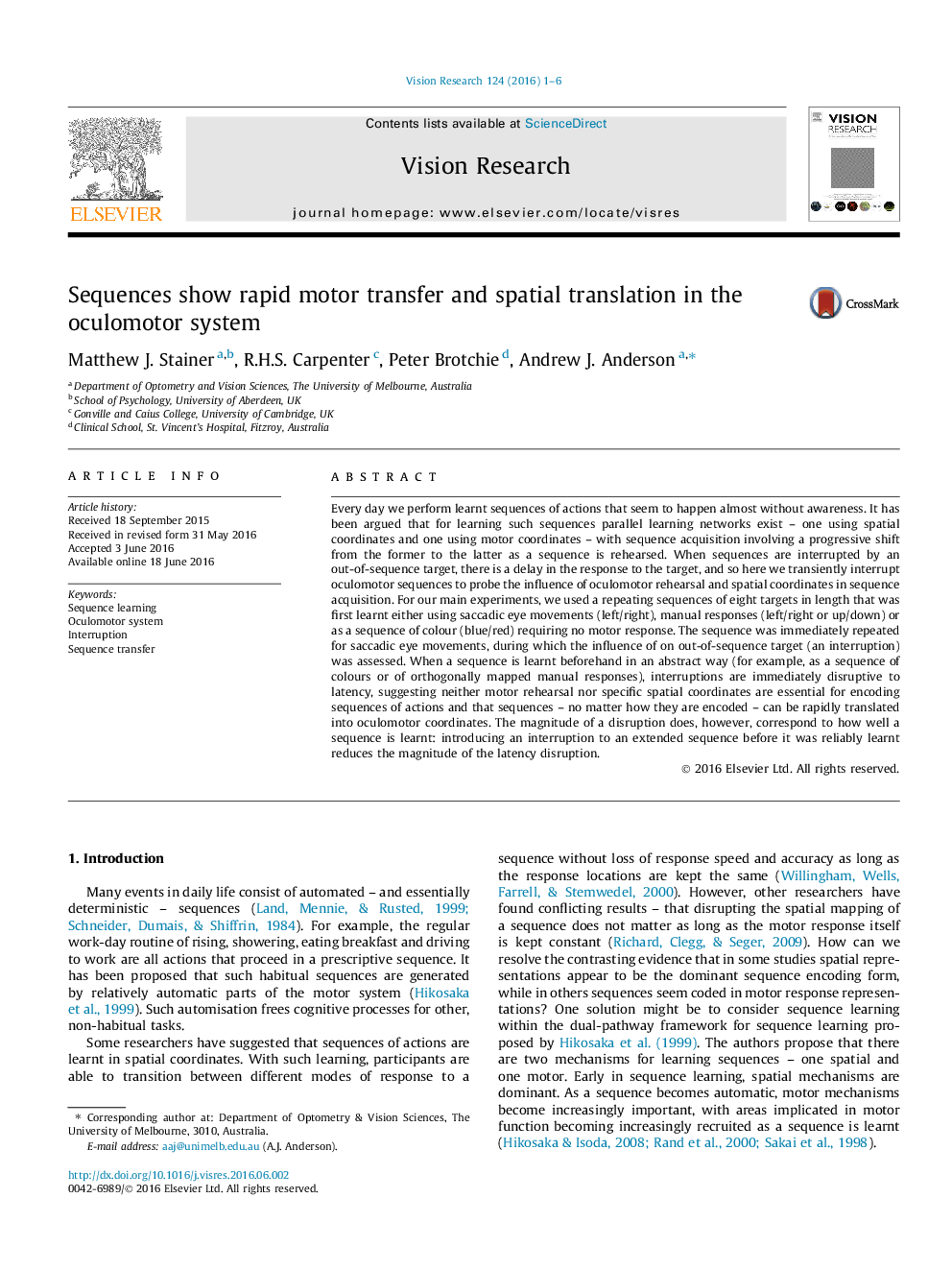| Article ID | Journal | Published Year | Pages | File Type |
|---|---|---|---|---|
| 6203003 | Vision Research | 2016 | 6 Pages |
â¢Sequences learnt in one spatial mapping rapidly translate to another.â¢Sequences learnt as button presses rapidly transfer to saccadic responses.â¢Sequences learnt in abstract (as colour or shape sequences) are rapidly translated.â¢Disruption magnitudes to sequence interruption increase across sequence learning.
Every day we perform learnt sequences of actions that seem to happen almost without awareness. It has been argued that for learning such sequences parallel learning networks exist - one using spatial coordinates and one using motor coordinates - with sequence acquisition involving a progressive shift from the former to the latter as a sequence is rehearsed. When sequences are interrupted by an out-of-sequence target, there is a delay in the response to the target, and so here we transiently interrupt oculomotor sequences to probe the influence of oculomotor rehearsal and spatial coordinates in sequence acquisition. For our main experiments, we used a repeating sequences of eight targets in length that was first learnt either using saccadic eye movements (left/right), manual responses (left/right or up/down) or as a sequence of colour (blue/red) requiring no motor response. The sequence was immediately repeated for saccadic eye movements, during which the influence of on out-of-sequence target (an interruption) was assessed. When a sequence is learnt beforehand in an abstract way (for example, as a sequence of colours or of orthogonally mapped manual responses), interruptions are immediately disruptive to latency, suggesting neither motor rehearsal nor specific spatial coordinates are essential for encoding sequences of actions and that sequences - no matter how they are encoded - can be rapidly translated into oculomotor coordinates. The magnitude of a disruption does, however, correspond to how well a sequence is learnt: introducing an interruption to an extended sequence before it was reliably learnt reduces the magnitude of the latency disruption.
